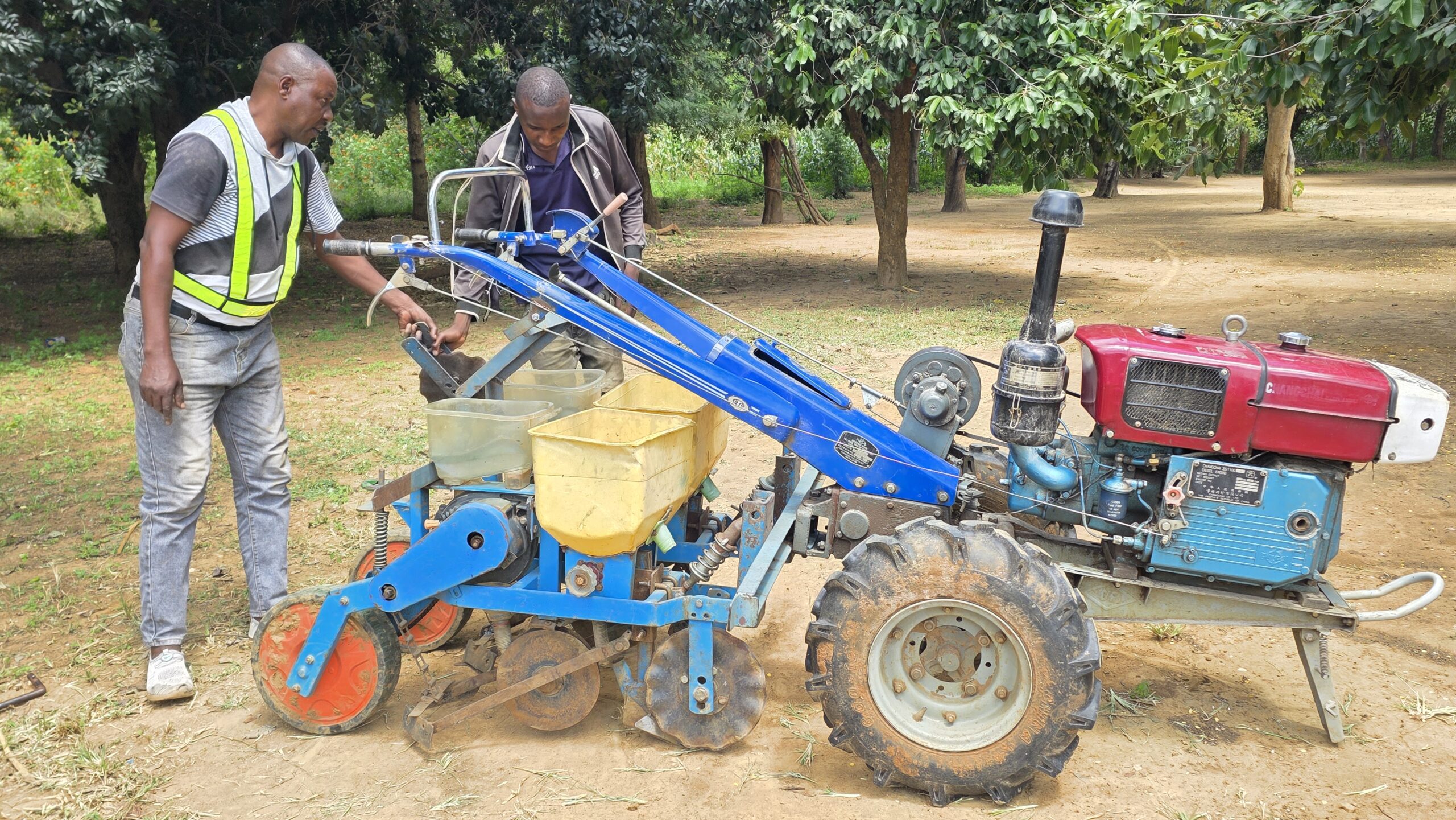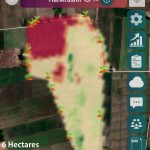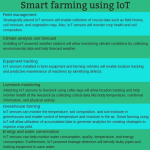Imagine transforming your small farm into a thriving, tech-savvy enterprise. Sounds intriguing, right?
With smart farming, this isn’t just a dream—it’s a practical reality that you can achieve. As a smallholder, you might think advanced technology is out of your reach or too complex to handle. But here’s the secret: smart farming is designed to be accessible and beneficial for farms of all sizes, including yours.
In this guide, you’ll discover how integrating smart technology can revolutionize your farming practices. We will explore how these innovations can boost your productivity, reduce waste, and increase your profits—all while making your life easier. If you’re ready to embrace the future of farming and see tangible results, keep reading. Your farm’s transformation starts here.
Benefits Of Smart Farming
Smart farming boosts productivity for smallholders by using technology to manage crops efficiently. It reduces resource waste and improves crop yield. Farmers can easily monitor soil health and weather conditions, enhancing decision-making. This approach saves time and increases profits, making farming sustainable and easier.
Smart farming is transforming the agricultural landscape, bringing a host of benefits to smallholders. By integrating technology into farming practices, you can improve efficiency, increase yields, and reduce waste. The benefits of smart farming are not just theoretical; they are practical and within your reach.Enhanced Productivity
Adopting smart farming techniques means using data-driven decisions to optimize your farm operations. Imagine having real-time data about soil conditions and weather patterns. This information allows you to plant at the best time, ensuring a higher crop yield. You can maximize productivity by adjusting your farming practices based on accurate insights.Cost Efficiency
Smart farming isn’t just about improving productivity; it also helps you save money. By using sensors and automation, you can reduce the amount of water, fertilizer, and pesticides needed. This precision farming reduces costs and minimizes environmental impact. Think about how much you could save with fewer resources yet achieve better results.Improved Resource Management
With smart farming, managing resources becomes simpler and more effective. You can track your water usage, monitor energy consumption, and manage livestock health with ease. This control helps prevent resource wastage and ensures sustainable farming practices. How much time could you save if you knew exactly where your resources are going?Increased Crop Quality
Smart farming technologies can help you improve the quality of your crops. By closely monitoring plant health and soil nutrients, you can ensure optimal growing conditions. This attention to detail leads to healthier, more robust crops. Wouldn’t you prefer to sell produce that is consistently high-quality?Better Decision-making
Data is at the heart of smart farming. It empowers you to make informed decisions quickly. Whether it’s choosing the right crop variety or determining the best time to harvest, data provides the clarity needed for effective decision-making. How confident would you feel if every decision was backed by reliable data? Smart farming offers practical solutions that can transform your small-scale farming operations. By leveraging technology, you can achieve more with less and secure a sustainable future for your farm. Are you ready to embrace the change and reap the benefits?Affordable Technologies For Small Farms
In the world of agriculture, smallholders often face many challenges. They have limited resources and access to advanced technology. Smart farming offers solutions to these challenges. Affordable technologies can transform small farms into efficient operations. These tools improve productivity without breaking the bank. Let’s explore some cost-effective technologies that smallholders can use.
Smart Irrigation Systems
Water management is crucial for small farms. Smart irrigation systems help conserve water. They use sensors to monitor soil moisture levels. Farmers can adjust watering schedules based on real-time data. This reduces waste and enhances crop growth.
Mobile Farm Apps
Mobile apps provide valuable information for smallholders. They offer weather forecasts, pest alerts, and crop management tips. Farmers can make informed decisions using these apps. Many are free or low-cost, making them accessible to all.
Solar-powered Solutions
Energy costs can strain small farm budgets. Solar-powered devices offer a sustainable alternative. They provide energy for lighting and irrigation systems. This reduces reliance on expensive electricity sources. It’s a clean, green solution for energy needs.
Drone Technology
Drones are not just for large-scale farms. They can be used to monitor small farm areas. Drones provide aerial views of crop conditions. Farmers can identify issues quickly and take action. This saves time and boosts efficiency.
Automated Equipment
Automation can lighten the workload on small farms. Automated equipment performs repetitive tasks efficiently. This includes planting, harvesting, and sorting crops. It frees up time for farmers to focus on other essential activities.
Implementing Smart Farming Practices
Smallholders can benefit from smart farming by using technology to improve crop yields and resource management. This practical guide helps farmers adopt efficient tools, ensuring sustainability and profitability. Adopting these practices leads to better decision-making and enhanced productivity.
Implementing smart farming practices can transform your smallholding into a thriving and efficient operation. Whether you’re growing vegetables, raising livestock, or cultivating fruits, adopting smart technologies can boost productivity and sustainability. The key is to start small and gradually integrate these innovations into your daily routine.Understanding The Basics Of Smart Farming
Smart farming involves using technology to improve agricultural processes. This might mean installing sensors to monitor soil moisture or using apps to track animal health. The goal is to make informed decisions based on real-time data. Start by identifying which areas of your farm need improvement. Is water usage a concern? Are your crop yields inconsistent? Pinpointing these challenges will help you choose the right technology.Investing In Smart Tools
Begin with affordable tools that offer immediate benefits. Consider weather stations that provide local forecasts and soil moisture sensors that alert you when to water. These tools can be game-changers for smallholders. You don’t have to invest in everything at once. Prioritize tools that address your most pressing needs. Remember, the goal is efficiency, not overcomplicating your operations.Integrating Mobile Apps
Mobile apps can streamline your farm management. There are apps for everything from crop planning to livestock tracking. They can help you stay organized and make decisions quickly. Choose apps that offer user-friendly interfaces and relevant features. If you’re not tech-savvy, look for ones with tutorials or customer support. The right app can be a valuable partner in your smart farming journey.Embracing Data-driven Decisions
Data is at the heart of smart farming. It allows you to see patterns and predict outcomes. When you collect data on weather, soil, and plant health, you’re better equipped to tackle challenges. Keep your data organized and review it regularly. Use it to plan your planting schedule, optimize irrigation, and reduce waste. How can data help you make more strategic decisions?Training And Education
Smart farming tools are only as effective as the person using them. Take time to learn how to use your new technologies. Attend workshops, read manuals, or watch online tutorials. Consider reaching out to other farmers who use smart tech. They can offer valuable insights and tips. Continual learning is essential for maximizing the benefits of smart farming practices.Balancing Technology With Traditional Methods
While technology is valuable, don’t overlook traditional farming knowledge. Combining the two can yield the best results. Use technology to enhance, not replace, your tried-and-true methods. Think of technology as a tool in your farming toolbox. It should complement your experience and intuition. How can you use both modern and traditional practices to create a more successful farm?Incorporating smart farming practices doesn’t have to be overwhelming. Start with small steps and build your knowledge. What smart farming tools will you explore first?

Challenges And Solutions
Smart farming offers many benefits for smallholders. Yet, it also brings challenges. Understanding these challenges is crucial for success. Solutions are available to overcome these hurdles. Let’s explore them.
1. Cost and AccessibilitySmart farming tools can be expensive. Smallholders often have limited budgets. Access to technology is another issue. Many rural areas lack proper infrastructure. Internet access can be unreliable or slow.
Solutions include government subsidies and partnerships. Sharing resources among farmers can also reduce costs. Community networks can help improve access.
2. Lack of Technical KnowledgeMany smallholders lack technical skills. Smart farming requires understanding of new tools. Training programs can bridge this gap. Farmers can learn through workshops and courses.
Local agricultural agencies can provide guidance. Online resources and tutorials are also helpful. Peer support from other farmers boosts confidence.
3. Data Security and PrivacySmart farming relies on data collection. This raises concerns about data security. Smallholders worry about privacy and misuse. Strong security measures are essential.
Using encrypted software can protect data. Farmers should choose trusted technology providers. Regular updates and training on data safety are necessary.
4. Climate and Environmental FactorsChanging climates impact farming activities. Smart tools need to adapt to these changes. Weather patterns can be unpredictable. Technology must account for this variability.
Solutions include weather forecasting tools and adaptive systems. Crop diversification can reduce risks. Collaboration with local climate experts is beneficial.

Conclusion
Smart farming offers smallholders many opportunities for growth. It helps improve crop yields and reduce waste. Using modern tools can simplify daily farming tasks. Smallholders can save time and resources with smart methods. Technology bridges the gap between tradition and innovation.
With smart farming, farmers gain better control over their farms. This guide provides practical steps for adopting new tools. Smallholders can enhance their farming practices and boost productivity. Embracing smart farming leads to a sustainable future. Explore these techniques and see the benefits.
Start small and grow gradually. Smart farming is the path to progress.


